With a turquoise color and transparent waters, these lagoons are located between the provinces of Ciudad Real and Albacete and are part of the Biosphere of La Mancha Húmeda.
They have been declared a Wetland of International Importance and a Site of Community Importance.
These lagoons are formed by the waters of the aquifer 24 of the Montiel field, giving rise to the birth of the Pinilla River. It is the rain that is in charge of dissolving the limestone rock in the area, leaving the water laden with carbonates that form the tuffaceous barriers.
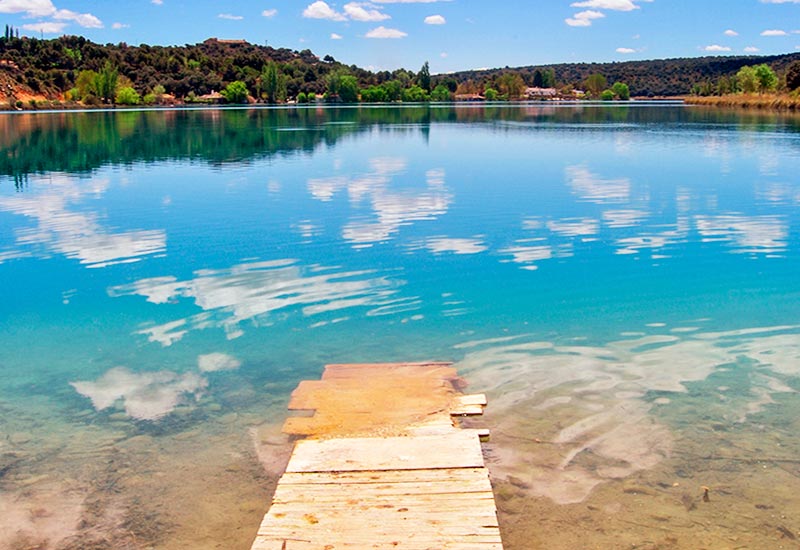
In a stricter sense, these would not be lagoons, but rather a stagnant stream of water that is created by collapses of the riverbed.. They are a succession of sinkholes that extend 18 kilometers. The Tobáceas barriers are the link between the lagoons, forming cascades and waterfalls.
Before starting with the list, remember that we have scheduled trips to the Ruidera Lagoons on different dates, traveling in a group, making new friends and with the possibility of kayaking. You can see all the information about this trip in our official link.
Now we will show you which would be the essential things to see in Ruidera Lagoons:
Peñarroya Castle
This castle was originally built by the Muslims, but with the Christian conquests it became the domain of the Order of San Juan. Peñarroya Castle houses the Chapel of Our Lady of Peñarroya, which is the patron saint of Argamasilla de Alba and La Solana.
It is currently used for pilgrimages, a place of worship and is freely accessible to tourists.
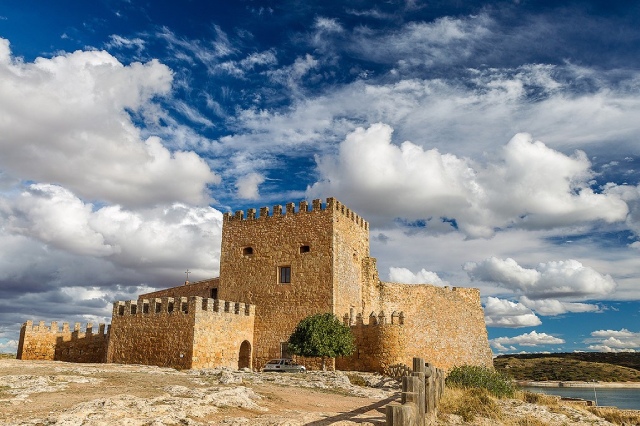
Low Lagoons
It must be taken into account that the various lagoons that make up all this heritage have different divisions. We begin with the Lagunas Bajas, named for their shallow depth and abundant marsh vegetation..
Those that make up Las Lagunas Bajas are Laguna Cenagosa, Laguna Coladilla and Laguna Cueva Morenilla.
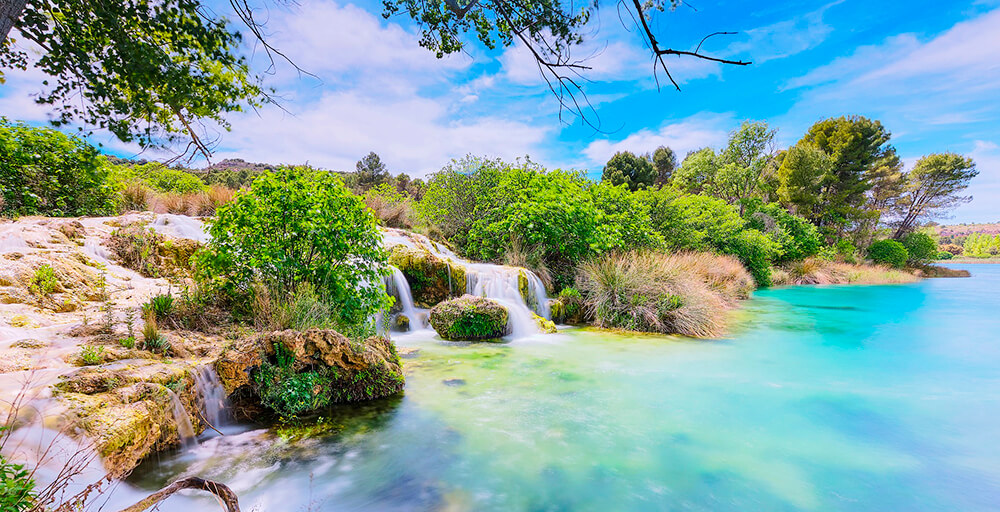
Ruidera
The name of these lagoons is due to the fact that the town of Ruidera is located in the heart of them..
In this small town, the autonomous community of Castilla-La Mancha highlights its Church of Santa María la Blanca, the Casa del Rey or its old Gunpowder Factory. However, what is most striking is its spot known as El Hundimiento, a waterfall that serves as a separation between the lower and middle lagoons.
Medium Lagoons
From the so-called Laguna del Rey to the Laguna de San Pedro, the Lagunas Medias are located. These are the best for swimming and water activities These are surrounded by hotels, camping and restaurants.
They are the ones that usually stand out on visits due to their clear waters, greater depth and limited vegetation on their edges. The so-called Laguna Colgada is the one that marks the separation between Ciudad Real and Albacete.
Then we have the Batana Lagoon, Santos Morcillos Lagoon and Salvadora Lagoon, which are quite close together. Finally, you will find in the Median Lagoons the Lengua Lagoon, the Redondilla Lagoon, the smallest of all, and the San Pedro Lagoon.
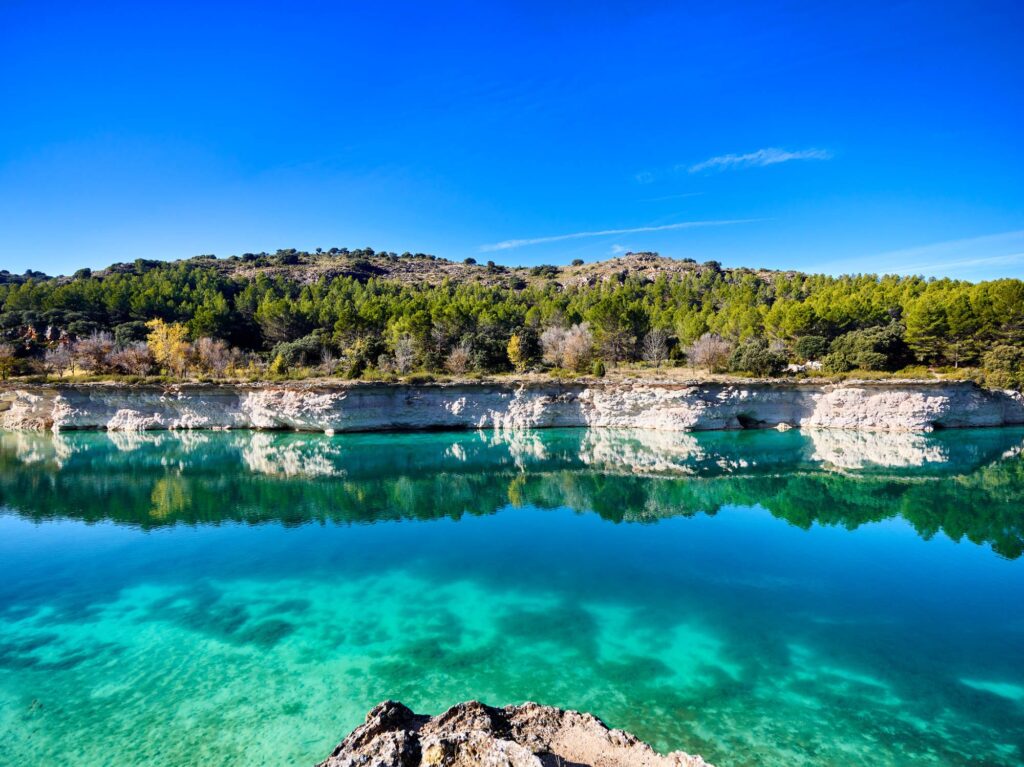
High Lagoons
Similar to the Lower Lagoons, these present marshy beds, ideal for the habitat of birds and amphibians. The names of the lagoons that make up this group are Laguna Tinaja, Laguna Tomilla, Laguna Concejo and Laguna Blanca.
One of the most beautiful formations in the entire park is called Plaza de Toros, which is located between the Tinaja Lagoon and the Tomilla Lagoon, with great greenish water.
Now that you know what you can see on your visit to Las Lagunas de Ruidera, we will tell you a little about what you can do on your way through this natural beauty.
Walking and hiking routes
Although it is possible to access each part of the lagoons by road, we recommend that you take a walk through its entire ecosystem and discover the beauty it has to offer. Here we leave you some of the official routes in the area
- Path of the Cave of Montesinos, begins at the Hermitage of San Pedro and stretches 800 meters to the famous cave of Don Quixote.
- Rochafrida Castle Path strong , circular path of 4.30 kilometers and low difficulty.
- Peñarroya Castle Route, a linear route of 21 kilometers and medium difficulty.
- Left Route of the Lagoons, linear path of 2.80 kilometers and low difficulty.
- Ossero Route, linear route of 5.30 kilometers and low difficulty.
- Route of the Laguna Blanca, linear route of 8 kilometers and medium difficulty.
- Senda del Pie de Enmedio, circular interpretive path of 6 kilometers and low difficulty.
- Senda del Castillo de Peñarroya, circular route of 1.80 kilometers around the fortress.
Swimming in the Ruidera Lagoons
Yes, it is possible to swimm in this paradise of transparent waters, however, we want to tell you which are the best ones to bathe in so you can get through the summer heat.
Those that have bathing areas are Laguna del Rey, Colgada, Santo Morcillo, Salvadora Redondilla and San Pedro. All these are duly signposted and with enabled accesses to be able to bathe in them.
Water activities
In addition to being able to swim in the Ruidera Lagoons, it is also possible to do water activities such as kayaking, paddle surfing, canoeing, snorkeling, diving and sailing.
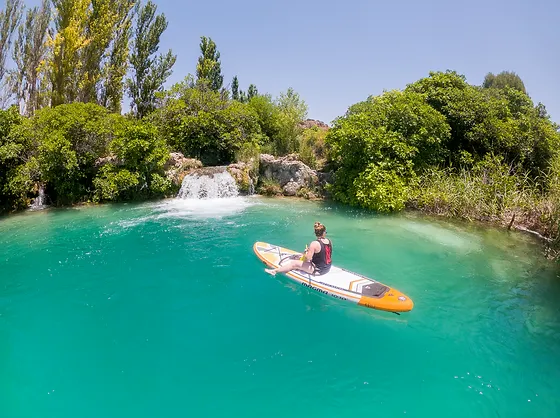
The only water activities that are not allowed in the lagoons are those that are motor boats or that may disturb the fauna.
Remember that we have scheduled outings to the Ruidera Lagoons, in groups and with the possibility of doing activities such as Kayak or Paddle Surf. You can reserve your place at this link.
We hope you enjoy this beautiful natural landscape and make the most of your summer days.
Also find us on INSTAGRAM

